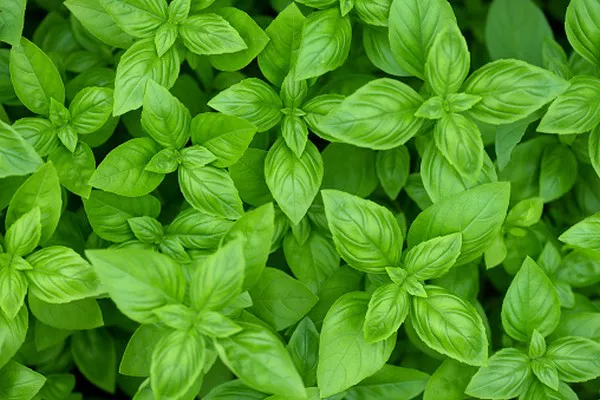Basil (Ocimum basilicum) is a popular herb known for its aromatic leaves and culinary versatility. While traditionally grown outdoors, many gardening enthusiasts have embraced the practice of cultivating basil plants indoors, allowing them to enjoy fresh basil year-round. However, the question of how long basil plants can thrive indoors remains a subject of curiosity. In this article, we delve into the factors that influence the lifespan of indoor basil plants and provide insights into how to extend their longevity.
Understanding the Growth Cycle of Basil
To comprehend the lifespan of indoor basil plants, it is essential to understand their natural growth cycle. Basil is an annual herb, which means that it completes its entire life cycle – from germination to seed production – within a single year. However, under optimal growing conditions, basil can be cultivated as a short-lived perennial, allowing it to continue growing for multiple years.
Lifespan of Indoor Basil Plants
The lifespan of indoor basil plants can vary significantly based on various factors, including environmental conditions, care practices, and the basil variety being grown. On average, when grown indoors, basil plants can live anywhere from six months to two years or more. However, with the right care and attention, some indoor basil plants have been known to persist for several years.
Factors Influencing Longevity
1. Light Exposure:
Adequate light is crucial for the health and longevity of indoor basil plants. Basil is a sun-loving herb that thrives in bright light conditions. When grown indoors, providing at least 6 to 8 hours of direct sunlight or equivalent artificial light is essential. Placing basil plants near a south-facing window or using grow lights can help ensure they receive the required light exposure.
2. Temperature and Humidity:
Basil prefers warm temperatures, ideally between 70-85°F (21-29°C). Avoid exposing the plants to drafts or extreme temperature fluctuations. Maintaining proper humidity levels, around 40-50%, can also contribute to the overall health and longevity of basil plants.
3. Watering Practices:
Overwatering or underwatering can significantly impact the lifespan of indoor basil plants. It is important to keep the soil consistently moist but not waterlogged. Allow the top inch of the soil to dry out before watering again. Using well-draining soil and pots with drainage holes can prevent waterlogged conditions.
4. Soil Quality:
The type of soil used for indoor basil plants is crucial. A well-draining potting mix enriched with organic matter can provide the necessary nutrients and aeration for healthy root growth. Regular fertilization with a balanced liquid fertilizer can also contribute to the longevity of the plant.
5. Pruning and Harvesting:
Regular pruning of basil plants encourages bushier growth and prevents them from becoming leggy. Pinching off the terminal growth tips and harvesting leaves regularly not only promotes new growth but also helps extend the lifespan of the plant. Avoid harvesting more than one-third of the plant at a time.
6. Pest and Disease Management:
Indoor basil plants are susceptible to pests such as aphids, whiteflies, and spider mites. Regularly inspect the plants for signs of pests or diseases and take appropriate measures to control infestations. Using natural remedies or insecticidal soap can help maintain plant health.
7. Container Size:
The size of the container can impact the growth and lifespan of indoor basil plants. Choose a container that provides enough space for root development. Transplanting the basil into a slightly larger pot as it grows can prevent the plant from becoming root-bound.
8. Variety Selection:
Different basil varieties have varying lifespans and growth habits. Some varieties, such as Thai basil or Genovese basil, are well-suited for indoor cultivation due to their compact growth and adaptability. Researching and selecting a basil variety that is conducive to indoor growing can contribute to a longer lifespan.
Extending the Lifespan of Indoor Basil Plants
While the natural lifespan of indoor basil plants may range from several months to a couple of years, there are strategies that can be employed to extend their longevity:
Continuous Harvesting: Regularly harvesting basil leaves promotes new growth and prevents the plant from going to seed prematurely, thereby extending its lifespan.
Provide Optimal Light: Ensuring that the basil plant receives sufficient light, either through natural sunlight or grow lights, is essential for its health and longevity.
Proper Watering Routine: Establishing a consistent watering routine that keeps the soil evenly moist without waterlogging can contribute to the overall well-being of the plant.
Fertilization: Providing balanced nutrition through regular fertilization helps sustain the plant’s growth and vitality.
Pruning: Regularly pinching back the basil plant encourages branching and prevents it from becoming overly tall or leggy.
Pest Management: Vigilant pest control measures, such as regular inspection and using natural remedies, can prevent pest infestations from weakening the plant.
Repotting: Transplanting the basil into a larger container when it outgrows its current pot prevents root-bound conditions and encourages healthy growth.
Conclusion
Indoor basil plants can thrive and provide a continuous supply of aromatic leaves for cooking, even beyond their traditional annual growth cycle. By understanding the factors that influence their lifespan and implementing appropriate care practices, gardening enthusiasts can enjoy the benefits of fresh basil year-round. With proper light, temperature, watering, and attention to pruning and pest management, indoor basil plants have the potential to flourish and extend their longevity for several years, bringing the joy of homegrown herbs to the indoor gardening experience.


